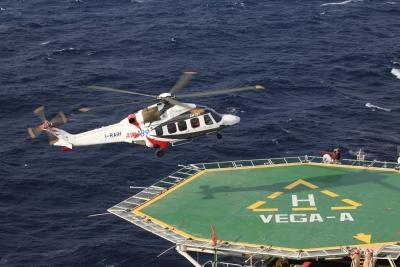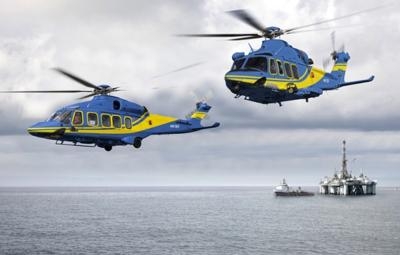New Safety Benchmark For Helicopter Gearboxes
AgustaWestland has successfully demonstrated a 50-minute loss of oil ... or “run dry” ... capability for the AW189 main gearbox to EASA. The AW189 will be the first helicopter ever to enter service with such a capability, which is 20-minutes more than any other currently certified helicopter.

In what Giuseppe Gasparini, AgustaWestland’s Head of Transmission Systems Design & Development describes as a “outstanding result”, the AW189 main gearbox was subsequently disassembled and the components checked. “Although they had sustained some damage due to lack of lubrication, overall they were in very good shape and this showed that our design approach and the way we engineered the distribution of residual oil made it possible to extend the run dry period to 50 minutes.”
Daniele Romiti, CEO of AgustaWestland said The capability for a helicopter to continue to fly after a loss of oil incident affecting the main gearbox is a critical safety issue that remains a top priority for manufacturers, operators and certification authorities worldwide.
Current EASA rules state that during any failure resulting in total loss of lubricant the aircraft must be capable of safe operation for at least 30 minutes after the crew is alerted to the problem. A helicopter main gearbox is a finely-tuned mechanical system which needs to run reliably and consistently at high input speeds (more than 20,000rpm) and torques, while coping with high temperatures and heavy stresses on its components. Loss of lubrication in flight can have serious consequences – a number of recent industry incidents have involved loss of oil from the main gearbox. The need for dry run capability is vital for all helicopter operators but particularly for those operating in harsh environments such as the offshore sector where immediate landing is not always an option.
AgustaWestland’s approach to reducing the risk of loss of oil from transmission systems differs from its competitors, first of all in the area of design. The design of most main gearboxes includes a heat exchanger designed to cool oil and a fan to draw air – typically these are located away from the main gearbox itself and connected to the main casing via pipes, hoses and fittings. Avoiding these external components is one way to mitigate the risk of catastrophic loss of lubrication.

Since the early 1980s AgustaWestland has developed the heat exchanger installation as integrally fitted to the main gearbox casing and has replaced external pipes with integrated cored oil passages. The company's designs also include redundancy on the lubrication system with dual pumps working in parallel to ensure sufficient oil flow should one pump fail and the low pressure warning be activated. Other measures include fail-safe capability on pressurised fittings, independent lubrication (sealed grease or oil) to mechanically-driven rotating components and multiple ‘green run’ testing and systems checks during assembly.
Finally, the ability to reduce heat generation within the main gearbox during a loss of oil situation is an important factor because this means less demand is placed on the residual reserves of oil. AgustaWestland has introduced measures to minimise friction through super finishing of gears and the introduction of special treatments and coatings as well as the use of heat-tolerant materials.
(Images provided by AgustaWestland)
 NTSB Final Report: Evektor-Aerotechnik A S Harmony LSA
NTSB Final Report: Evektor-Aerotechnik A S Harmony LSA ANN's Daily Aero-Term (09.15.25): Decision Altitude (DA)
ANN's Daily Aero-Term (09.15.25): Decision Altitude (DA) Aero-News: Quote of the Day (09.15.25)
Aero-News: Quote of the Day (09.15.25) Airborne 09.12.25: Bristell Cert, Jetson ONE Delivery, GAMA Sales Report
Airborne 09.12.25: Bristell Cert, Jetson ONE Delivery, GAMA Sales Report Airborne 09.10.25: 1000 Hr B29 Pilot, Airplane Pile-Up, Haitian Restrictions
Airborne 09.10.25: 1000 Hr B29 Pilot, Airplane Pile-Up, Haitian Restrictions




